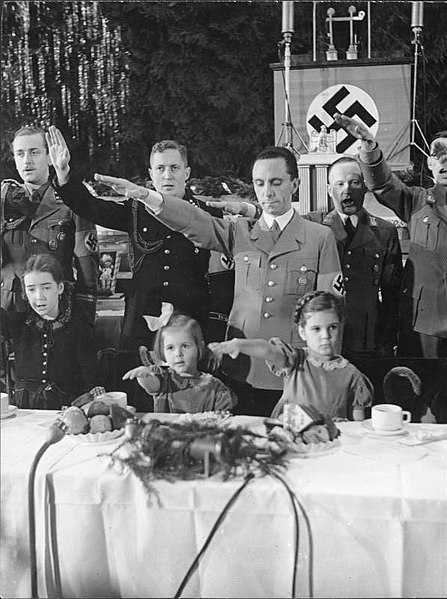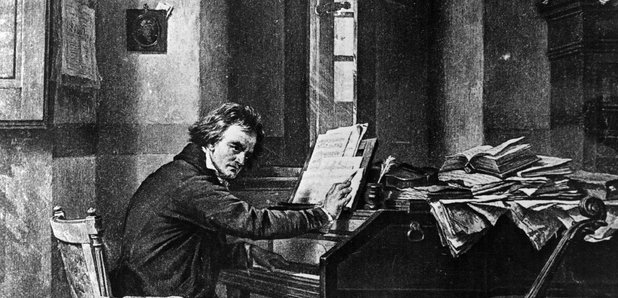This article briefly details the history of A440hz and its status as the internationally excepted frequency of tuning. A440hz was never a legally-agreed upon, institutionalized tuning, rather, the frequency has permeated society through wide reaching sources such as the radio industry, the military industry and through the instrument building process (the most effective method.)
As late as 1940 but especially in the 17-1800’s, the frequencies of A430hz, C256hz (A444hz) and A432hz were consciously agreed upon as the optimum universal tuning for our music.
All music lovers and human beings should, at the very least, be concerned with the history and origins of A440hz. Any cultural implementation birthing from Berlin propaganda outlets circa 1939 can be safely considered suspect.
The sad truth is reversing this ship will be a slow process due to the overwhelming number of musical instruments designed to be calibrated to A440hz. Very few instruments are still built with the frequency of A432hz in mind. They would include Tibetan monk bowls, Native American flutes and drums, the Didgeridoo, Chinese Bamboo and other tribal instruments.
All western instruments, especially those making up marching bands and symphony orchestras are constructed to be tuned to a higher, more damaging frequency.
Lets not even get started with Autotune…
More posts will come out about the history of “concert pitch” (A440hz). The truth will be revealed so that true change can occur. Information, to this day, remains the most effective tool we have as humans beings to instill positive revolutionary change. Progression forward is all that matters. Take nothing for granted and question everything for even seemingly mundane topics, like pitch frequency, can rekindle themselves into blazing new fires of rejuvenated truth.
-B
A Brief History of Musical Tuning

Joeseph Goebbels
The first explicit reference to the tuning of middle C at 256 oscillations per second was probably made by a contemporary of J.S. Bach. It was at that time that precise technical methods developed making it possible to determine the exact pitch of a given note in cycles per second. The first person said to have accomplished this wasJoseph Sauveur (1653-1716), called the father of musical acoustics measured the pitches of organ pipes and vibrating strings, and defined the musical scale at 256 cycles per second.
In fact, A=440 has never been the international standard pitch, and the first international conference to impose A=440, which failed, was organized by Nazi Propaganda Minister Joseph Goebbels in 1939. Throughout the seventeeth, eighteenth, and nineteenth centuries, and in fact into the 1940s, all standard U.S. and European text books on physics, sound, and music took as a given the “physical pitch” or “scientific pitch” of C=256, including Helmholtz’s own texts themselves. Figures 13 and 14 show pages from two standard modern American textbooks, a 1931 standard phonetics text, and the official 1944 physics manual of the U.S. War Department, which begin with the standard definition of musical pitch as C=256.[1]J.S.
Bach, as is well known, was an expert in organ construction and master of acoustics, and was in constant contact with instrument builders, scientists, and musicians all over Europe. So we can safely assume that he was familiar with Sauveur’s work. In Beethoven’s time, the leading acoustician was Ernst Chladni (1756-1827), whose textbook on the theory of music explicitly defined C=256 as the scientific tuning.Up through the middle of the present century, C=256 was widely recognized as the standard “scientific” or “physical” pitch (see Figures 13 and 14).

Ludwig Van Beethoven
Regarding composers, all “early music” scholars agree that Mozart tuned at precisely at C=256, as his A was in the range of A=427-430. Christopher Hogwood, Roger Norrington, and dozens of other directors of orginal-instrument orchestras’ established the practice during the 1980’s of recording all Mozart works at precisely A=430, as well as most of Beethoven’s symphonies and piano concertos. Hogwood, Norrington, and others have stated in dozens of interviews and record jackets, the pragmatic reason: German instruments of the period 1780-1827, and even replicas of those instruments, can only be tuned at A=430.
The demand by Czar Alexander, at the 1815 Congress of Vienna, for a “brighter” sound, began the demand for a higher pitch from all the crowned heads of Europe. While Classical musicians resisted, the Romantic school, led by Friedrich Liszt and his son-in law Richard Wagner, championed the higher pitch during the 1830’s and 1840’s. Wagner even had the bassoon and many other instruments redesigned so as to be able to play only at A=440 and above. By 1850, chaos reigned, with major European theatres at pitches varying from A=420 to A=460, and even higher at Venice.
In the late 1850’s, the French government, under the influence of a committee of composers led by bel canto proponent Giacomo Rossini, called for the first standardization of the pitch in modern times. France consequently passed a law in 1859 establishing A at 435, the lowest of the ranges of pitches (from A=434 to A=456) then in common use in France, and the highest possible pitch at which the soprano register shifts may be maintained close to their disposition at C=256. It was this French A to which Verdi later referred, in objecting to higher tunings then prevalent in Italy, under which circumstance “we call A in Rome, what is B-flat in Paris.”
Following Verdi’s 1884 efforts to insitutitionalize A=432 in Italy, a British-dominated conference in Vienna in 1885 ruled that no such pitch could be standardized. The French, the New York Metropolitan Opera, and many theatres in Europe and the U.S., continued to maintain their A at 432-435, until World War II.
The first effort to institutionalize A=440 in fact was a conference organized by Joseph Goebbels in 1939, who had standardized A=440 as the official German pitch. Professor Robert Dussaut of the National Conservatory of Paris told the French press that: “By September 1938, the Accoustic Committee of Radio Berlin requested the British Standard Association to organize a congress in London to adopt internationally the German Radio tuning of 440 periods. This congress did in fact occur in London, a very short time before the war, in May-June 1939. No French composer was invited. The decision to raise the pitch was thus taken without consulting French musicians, and against their will.’‘ The Anglo-Nazi agreement, given the outbreak of war, did not last, so that still A=440 did not stick as a standard pitch.

London International Standardizing Organization (BSI)
A second congress in London of the International Standardizing Organization met in October 1953, to again attempt to impose A=440 internationally. This conference passed such a resolution; again no Continental musicians who opposed the rise in pitch were invited, and the resolution was widelyInternational Standardizing Organizationignored. Professor Dussaut of the Paris Conservatory wrote that British instrument makers catering to the U.S. jazz trade, which played at A=440 and above, had demanded the higher pitch, “and it is shocking to me that our orchestra members and singers should thus be dependent upon jazz players.” A referendum by Professor Dussaut of 23,000 French musicians voted overwhelmingly for A=432.
As recently as 1971, the European Community passed a recommendation calling for the still non-existent international pitch standard. The action was reported in “The Pitch Game,” Time magazine, Aug. 9, 1971. The article states that A=440, “this supposedly international standard, is widely ignored.” Lower tuning is common, including in Moscow, Time reported, “where orchestras revel in a plushy, warm tone achieved by a larynx-relaxing A=435 cycles,” and at a performance in London “a few years ago,” British church organs were still tuned a half-tone lower, about A=425, than the visiting Vienna Philharmonic, at A=450.







